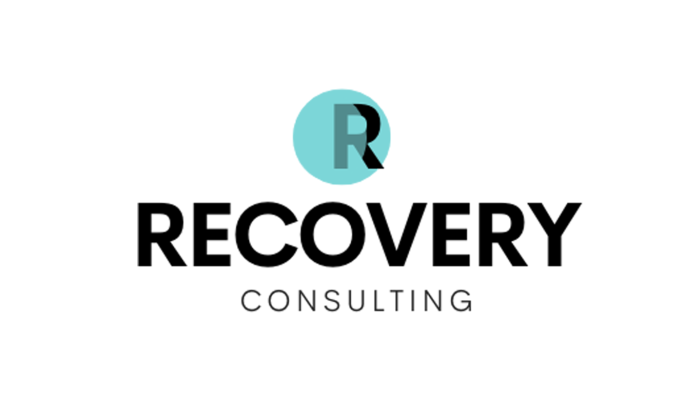Mar 9, 2018

Treatment Program Discernment and Selection: Internet and Directory Deception and the NAATP Treatment Selection Guide
By Marvin Ventrell
NAATP Executive Director
23 Million Americans suffer from addiction. An estimated 10% get the specialized care they need. Compare this to diabetes where an estimated 87% receive specialized care. Addiction is a disease and addiction treatment is a health care service. It is plain to see we have a serious health care gap between addiction treatment and need, and the need is great.
Unlike most healthcare, government funding is the primary source of payment for addiction care and that funding is woefully inadequate. Private insurance doesn’t adequately close the gap. It pays about 40% of medical care generally but only about 10% of addiction care. While parity law and addiction as an essential healthcare benefit have the potential to close that gap, we are not there yet.
Accessing appropriate treatment, therefore, is a considerable challenge. We who work in the field know what appropriate treatment, for the appropriate level of care, looks like, and where to find it. However, identifying treatment that is both high quality and attainable is a serious problem for both the typical consumer and even the payer.
Locating good healthcare is never easy but for most conditions, consumers follow a sensible path. We seek the advice of trusted professionals who work in the field. We inquire with those who have experienced the condition. We ask our primary healthcare provider for a referral. We contact our insurer to find out what services are covered.
Consumers searching for addiction care frequently do not follow this path and are prone to falling into a web of marketing deception. Rather than focusing on appropriate health care criteria, the consumer can be lured toward flashy amenities, false promises, and economic bargains. These are not sensible healthcare selection criteria. It is alarming to think that a lifesaving healthcare selection would be influenced by luxury accommodations and whether the facility has a pool or is near the beach.
Addiction treatment is confusing and misunderstood to the consumer. We even have a confusing name for it: rehab. (The term rehab is both inaccurate and minimizes the gravity of the disease. It is time we stopped using it.) Further, the consumer or the consumer’s loved ones are typically operating in crisis and are vulnerable to deception.
So, the consumer turns to the internet. The landscape for finding treatment is dominated by the internet, which is dominated by Google, which is itself a function of marketing and the aggregation of consumer identity and behavior. The system is not built to help the consumer find the best care. It is built to help the advertiser direct the consumer.
The internet is frequently the source of manipulation and deception conducted by a minority of treatment providers and treatment brokers. Google AdWords can be dominated by unscrupulous marketers. Numerous other predatory web practices are designed to deceive the consumer. The AdWords game became so dangerous to the consumer that Google agreed to suspend that source of considerable income for the time being. NAATP is currently working with Google to develop a plan to reintroduce AdWords, accompanied by certain safeguards against deceptive practices.
Online treatment directories to the rescue! Not so fast. Such private directories can be of limited value to the consumer and can be misleading. They may be merely disguised advertising tools for one or more treatment centers or treatment brokers. Despite listing many other programs, frequently without permission, and presenting as independent resources, they still direct the consumer to call a specific 800 number where “caring professionals” are available. These directories are not, as some have suggested, analogous to the phonebook yellow pages, nor are they the Yelp of treatment. The buying and selling of patient leads can also be facilitated by online directories (remember, this is an identity aggregation system), a practice prohibited by the NAATP Code of Ethics. Additionally, the consumer must beware of so called treatment program rankings. Such rankings are not a recognized practice in the field.
The consumer may also find itself visiting a website that purports to be a treatment educational resource but is, itself, designed to aggregate identities and market certain treatment programs to them. Some such sites can be operated by a single program while not clearly branded with the program’s identity.
The government, through the Substance Abuse and Mental Health Services Administration (SAMHSA), has produced an online repository of mental health and addiction services. It is a large repository that contains approximately 13,000 addiction treatment service entities. It is an important and useful repository of information, particularly for professionals working in the field, researchers, and policy-makers. In its depth and selection criteria, it may not be the most useful tool for the consumer to narrow and select care.
Good consumerism requires discernment based on objective criteria. To aid the consumer and payer in this process, NAATP has produced a guide to treatment program selection. We encourage the consumer and the professional to read and use this guide in the process of selecting addiction treatment. We further encourage treatment providers themselves to review this guide and ask themselves whether they meet the conditions set forth.
1. Addiction treatment is health care and must be chosen as such
Do not be swayed by the photography and marketing of luxury amenities rather than necessary core health care service.
2. There are knowable indicia of quality in addiction treatment
Indicia include descriptions of evidence-based practices, professionally credentialed staff, and accreditation. A visit and tour of the facility will reveal much.
3. Transparency of treatment center information is essential
The deeper you look, the more useful information you should find including location, years of operations, outcomes data (but not “guarantees”), depth of clinical information, inquiries into consumer medical history, and in-network insurance information.
4. A treatment program should pledge compliance and accountability to a code of ethics
Has the program adopted the NAATP Code of Ethics or similar comprehensive criteria to which it holds itself accountable, including an accountability system.
NAATP Guide to Selecting Addiction Treatment
There is no silver bullet or simple answer to the problem of deceptive online treatment marketing. NAATP prohibits these practices by our members, and we are dedicated to protecting the consumer and identifying reliable practices. The Selection Guide and the Code of Ethics are contributions to this process. More tools to promote quality are forthcoming through the NAATP Quality Assurance Initiative (The QAI).
The National Association of Addiction Treatment Providers has served as our country’s addiction treatment professional membership society for 40 years. NAATP members come together as a collaborative body of treatment professionals dedicated to promoting the availability and highest quality of addiction treatment. Membership in NAATP is not selfish. It is collaborative.
Membership in NAATP requires demonstrated licensing for all services provided at all treatment locations. NAATP members pledge to comply with the NAATP Code of Ethics and further agree that failure to do so warrants expulsion from the association. NAATP members dedicate themselves to best practices and open themselves to public scrutiny through a consumer and professionals complaint process.
Membership in NAATP means something. NAATP members have made a commitment to be part of the solution by holding themselves to a higher standard. All NAATP treatment provider members are listed in the NAATP Addiction Industry Directory – the AID. NAATP member listings provide comprehensive and transparent listings of the treatment center, including indication of center accreditation and listing of key personnel. The AID is searchable by name, location, and type of clinical services offered.
We make no referrals. We have no favorites. There are no sponsored ads. NAATP is committed to providing a transparent and unbiased resource for the professional and the consumer.
Access the NAATP Addiction Industry Directory:
For more information about NAATP or to inquire as to membership, visit NAATP.org or call us at 888.574.1008.





















